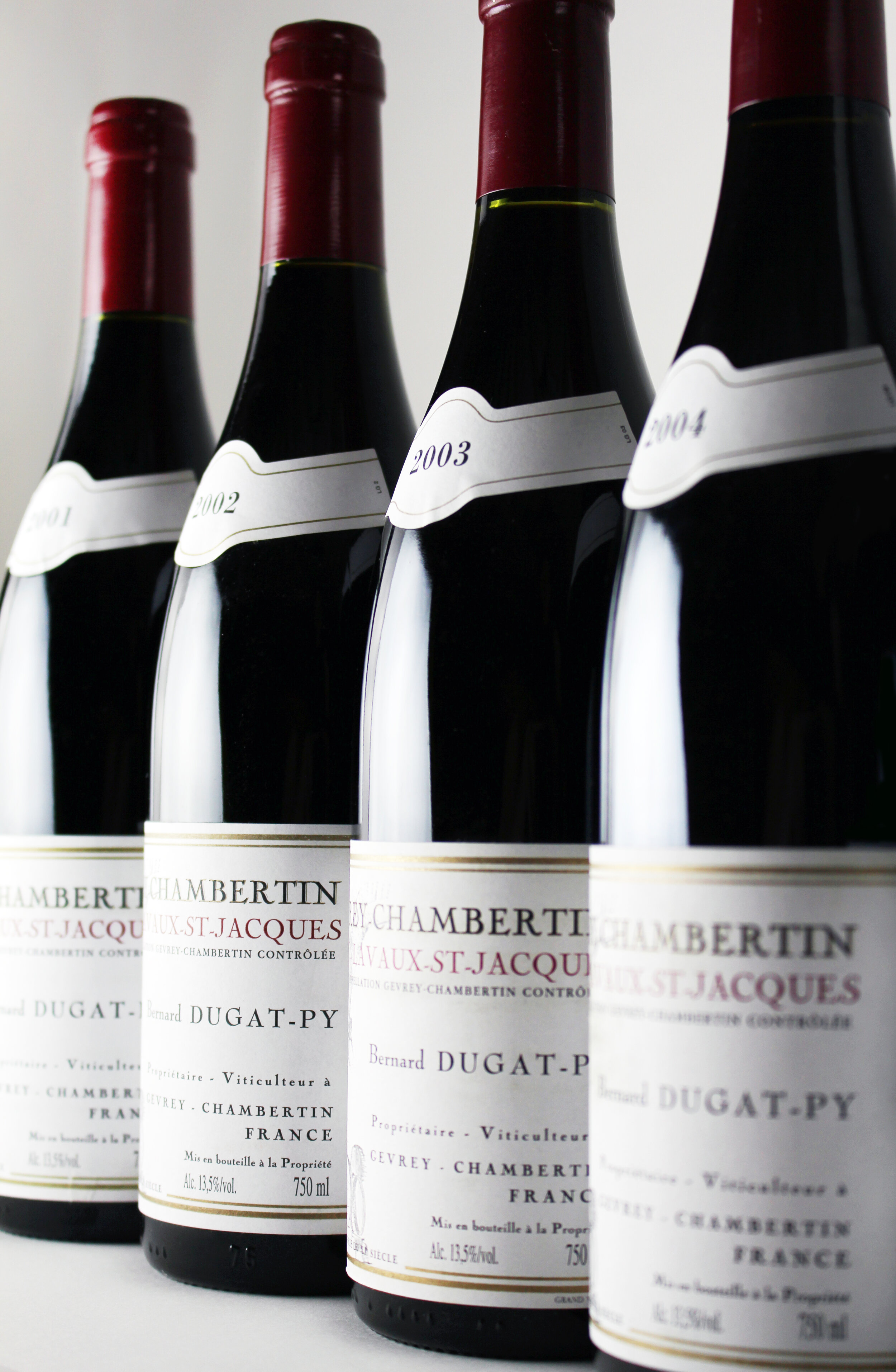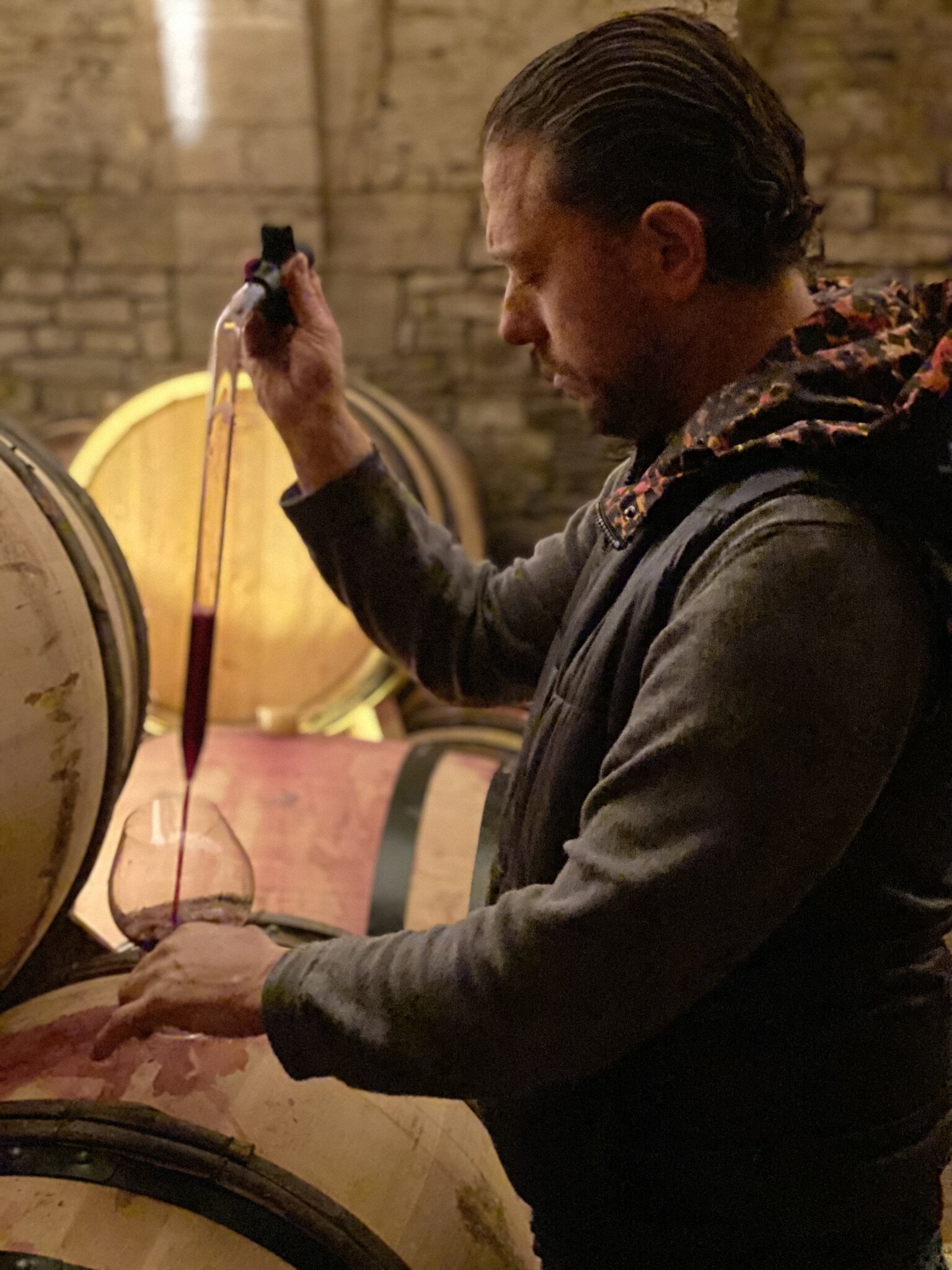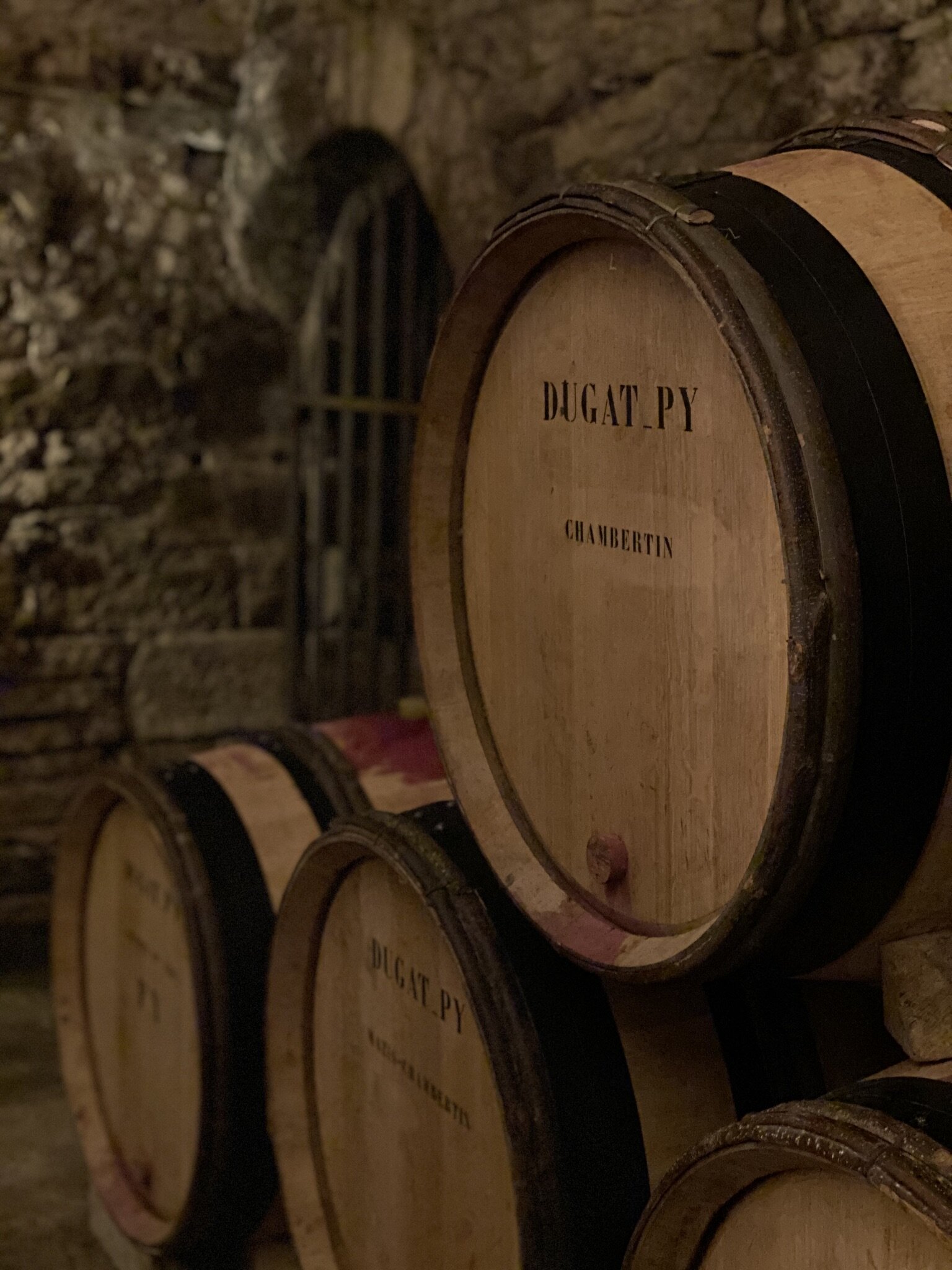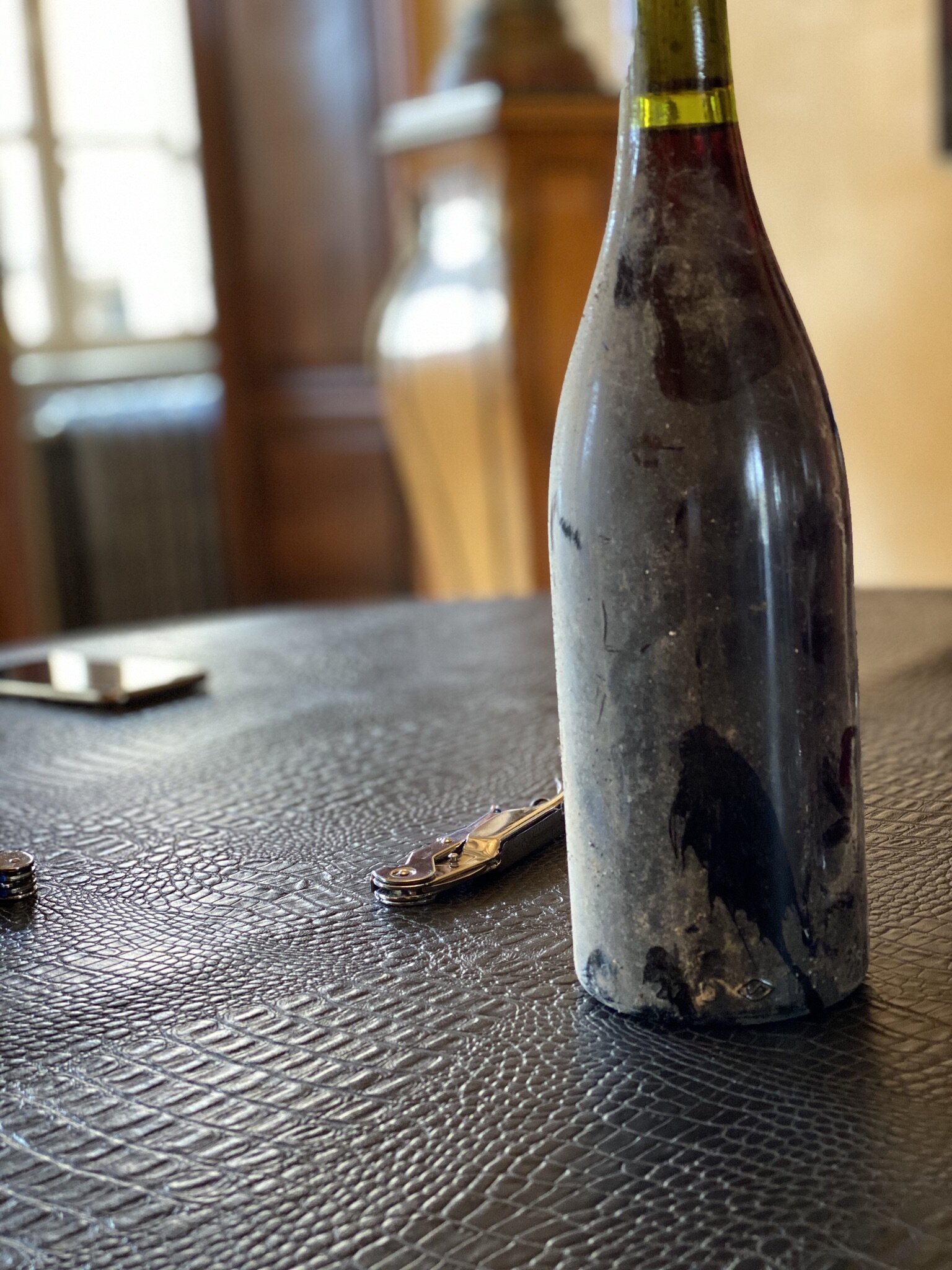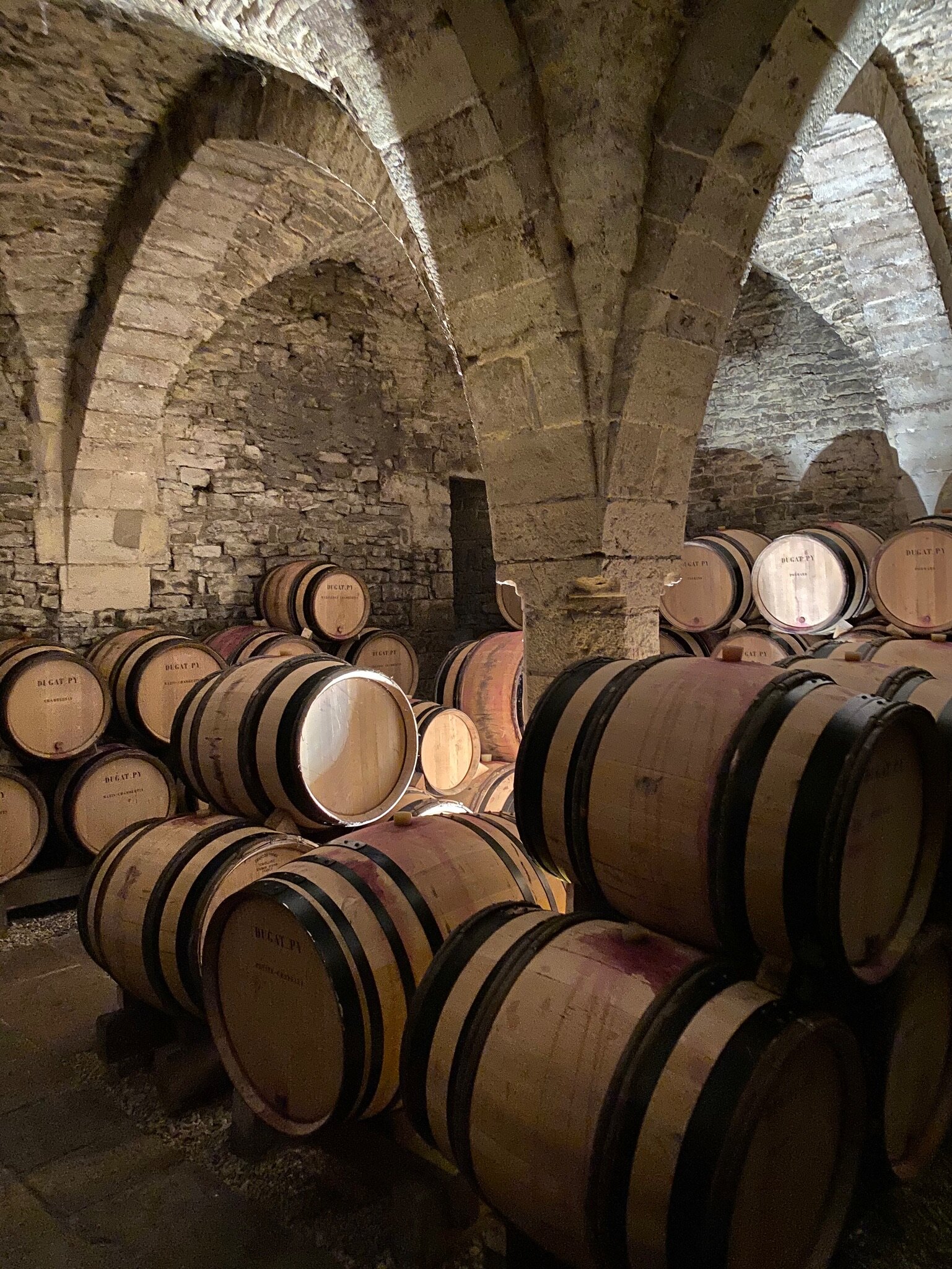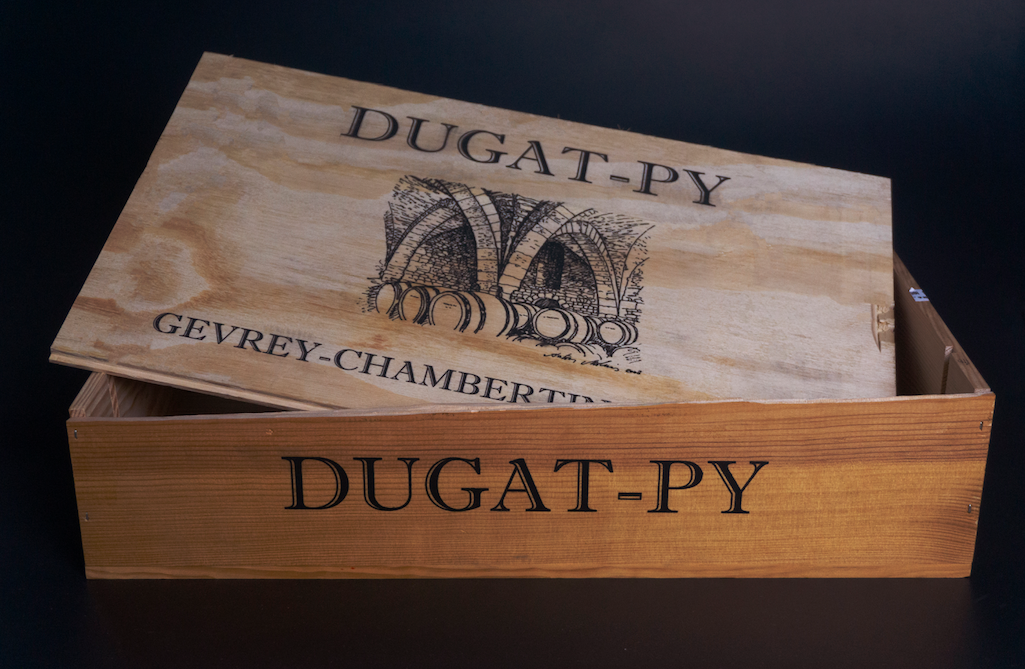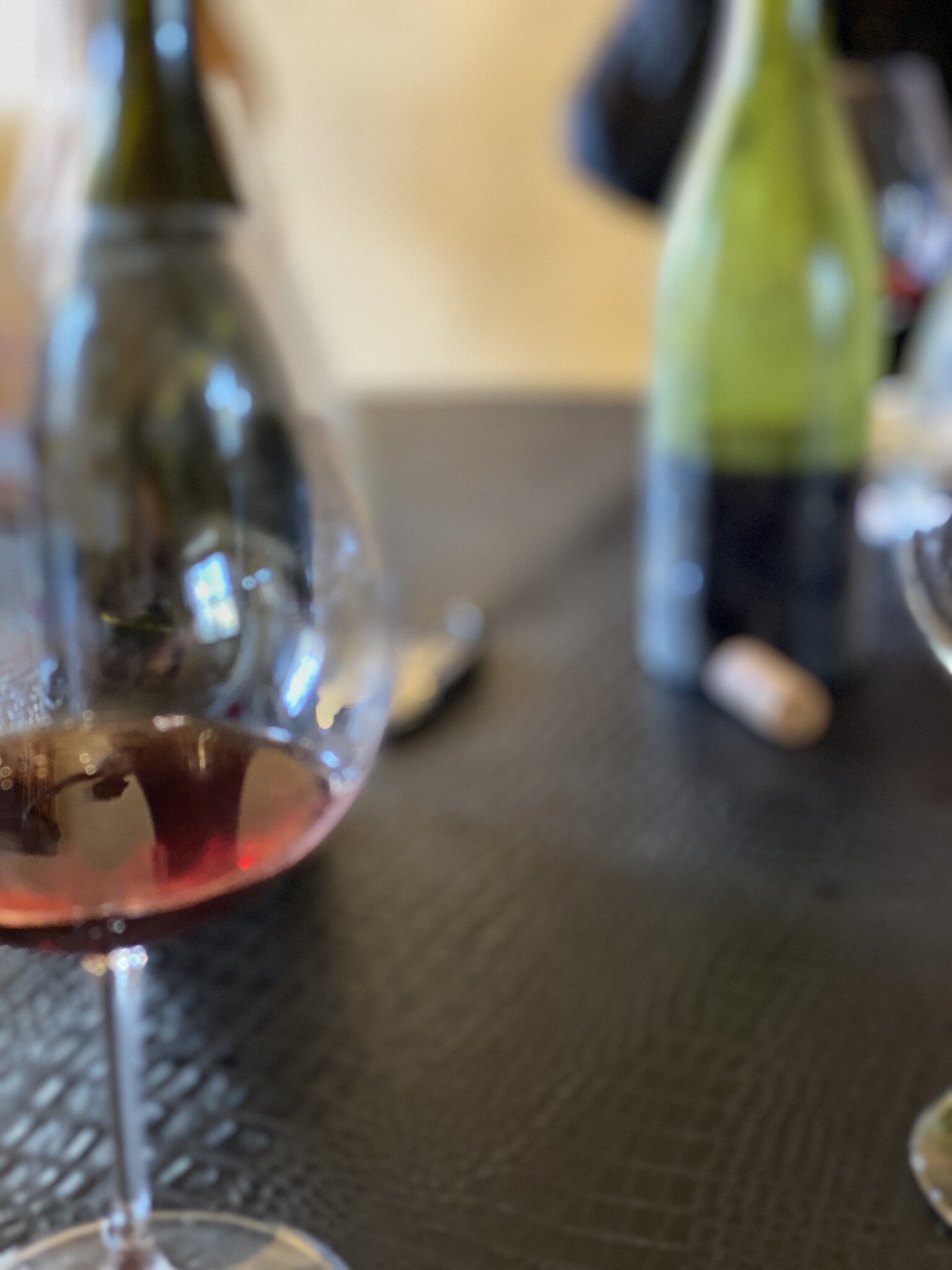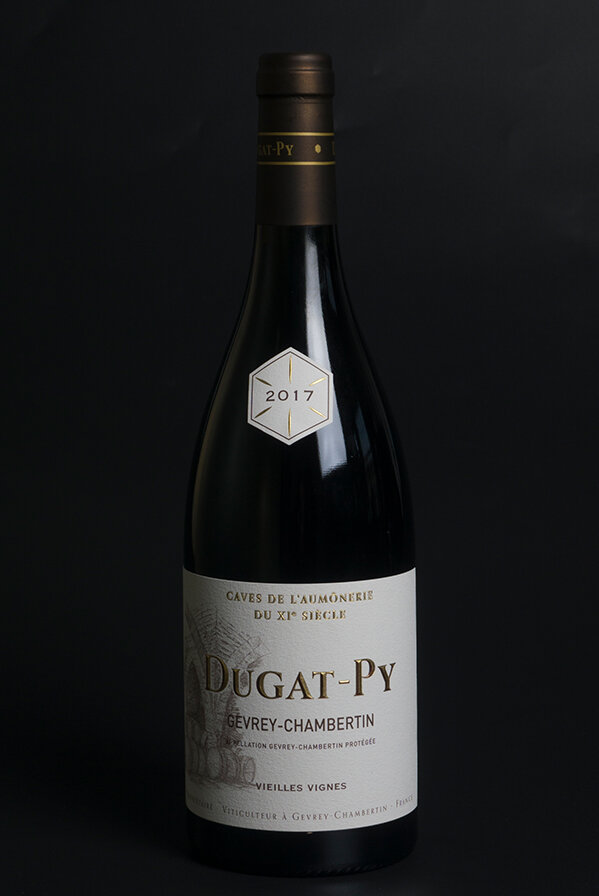DOMAINE DUGAT-PY
Gevrey-Chambertin
Located in the heart of Gevrey-Chambertin, at the foot of the Combe de Lavaux, Domaine Dugat-Py is based in the buildings of the Aumônerie. Little remains of these buildings today, apart from the cellars, which were built in the 11th and 12th centuries, under the direction of the Aumônier (Abbot) Halinard. Continuing a nine hundred year tradition, Dugat-Py wines are aged in these magnificent vaulted cellars.
It all started for the Dugat family when Fernand Dugat married Jeanne Bolnot in 1923. The Bolnot family had been winegrowers since the 17th century and Jeanne had inherited top vineyards in Gevrey such as Charmes-Chambertin. As Burgundy’s vineyards had to be replanted on American rootstocks in the aftermath of phylloxera, Jeanne took a job at Gevrey’s Bernollin nursery and became on of the most celebrated grafters of her days. She also encouraged Fernand too acquire more land at the time. Fernand and Jeanne’s children, Maurice, Pierre and Thérèse, each founded a domaine of their own with the vineyards inherited from their parents. Pierre and his son, Bernard, began to bottle wine at the domaine in 1989 under the name Domaine Pierre Dugat. For many years, their production was sold in cask to the region’s best négociants, including Lalou Bize-Leroy (who was a regular purchaser of their Charmes-Chambertin). In 1994, Bernard, renamed the estate Domaine Dugat-Py, appending his wife’s surname to his own.
Loïc Dugat-Py began working with his father, Bernard, in 1997 and fully took over in 2015. He is closely involved in the domaine’s significant evolution over the past decade.
As ever, the wines at this address are deep and concentrated wines, the product of low yields and old vines. Recent vintages reveal a unique energy, which the family attributes to biodynamic farming, and which very few producers of contemporary Burgundy can match.
In the Vineyard
Superb vine genetics and remarkable work ethic in the vineyards is without a doubt the key to success of this domaine.
Domaine Dugat-Py counts some of the greatest terroirs of Gevrey including 0.05 hectares of the king of Burgundy: Le Chambertin. The domaine also owns chardonnay vineyards in Meursault, Chassagne-Montrachet, Pernand-Vergelesse, and Corton-Charlemagne. Surprisingly, producing white wines is not a novelty for the family as Fernand Dugat, Loïc’s great-grandfather, was producing white wines in the stonier, cooler climats of the Combe Lavaux before the appellation d’origine contrôlée system prohibited it.
The vineyards are planted with vines that are for the most part very old. Across the 10-hectare domaine the vines reach the average age of 65 years. The family’s patrimony of fine old vines dates back to the time of Fernand and Jeanne Dugat. While working at the Bernollie nursery in Gevrey-Chambertin, Jeanne chose only the finest vine material for her family’s planting and thus deserves the credit for the Dugats’ exceptional massal selection of “Pinot Fin”. Since that time, missing vines have been systematically replaced with massal selection, never with clones.
Organic farming began with experiments in 1999 and duly convinced the domaine opted to go fully organic four years later. Around the same time Loïc gradually starting implementing biodynamic methods at the domaine with the help of consultant Paul Masson. While Bernard was never concerned with pursuing official certification, Loïc decided to do so with the 2016 vintage.
Soils work is essential here and the vineyards are plowed in deep furrows. Since 2006, a horse is used to plow the vineyards. The vines are pruned rather late and when required, Loïc will undertake debuding and green harvest. In the mid-2000s, Loïc and his father also began experimenting with rolling the canopie instead of trimming and hedging them. The idea behind this choice is simple: when a vine is cut, a hormonal response promotes vegetative growth, whereas when the canopies are folded over on themselves, the plan is instead encourage to stop growing and start ripening. Beginning with their holdings in Chambertin and Mazis-Chambertin, this technique is now being applied to all the domaine’s grands and premiers crus.
As a result, the yields are consistently low –often around 20 hectoliters per hectare- and the grapes are naturally concentrated, with a high ratio of solids to juice and with their small berries and open-cluster architecture. The grapes are therefore balanced, with riper tannins while retaining better acidity resulting in wines that are more vividly differentiated by site.
In the Cellar
In the cellar, the wines are vinified with as little intervention as possible.
The domaine employs significant quantities of whole-cluster fermentation, varying according to the vintage and the vineyard. There is no cool pre-maceration and extraction continues to be gentler with no more that one punch down and one pump over per day during the fermentation in cement and wooden vats.
Loïc has also quietly reduced the percentage of new oak used and refined the quality of the barrel used for aging. The wines are matured in François Frères barrel that have been thoughtfully selected after a significant amount of time tasting and discussing with Max Gigandet, director of Tonnellerie François Frères.
From 2002 onward, the marriage of wine and wood seems to have become more harmonious and extraction more selective. The wines are bottled without fining or filtration, the exact date being determined by taste.
Chambertin Grand Cru
Très Vieilles Vignes
Near the top of the vineyard the 0.05-hectare plot of Dugat-Py is planted with vines that are 90 year-old in average. This tiny cuvee matures in a small custom-made barrel each year, which varies in size according to the vintage’s production. The yearly production is between 220 and 270 bottles.
Mazis-Chambertin Grand Cru
Très Vieilles Vignes
Dugat-Py’s 0.22-hectare plot of Mazis-Chambertin his planted with 70 years old vines. This vineyard produces deep and tannic wine with impressive length. Between 800 and 1100 bottles are produced every year.
Mazoyères-Chambertin Grand Cru
Made from 0.22 hectares of vines the yearly production of the Mazoyères-Chambertin is between 800 and 1100 bottles. The vines owned by the domaine are on average 30 years old in this parcel.
Charmes-Chambertin Grand Cru
Vieilles Vignes
The Charmes-Chambertin Grand Cru is made from 0.47 hectares of vines. One third of the grapes come from Mazoyères, bringing power, and two third of the grapes come from Charmes, bringing elegant fruit to the cuvée. The Charmes-Chambertin is noticeably the most accessible when young of the Dugat-Py’s Grand Crus.
Gevrey-Chambertin 1er Cru
Lavaux St-Jacques Vieilles Vignes
With only 0.14 hectares of vine in Lavaux St-Jacques, Dugat-Py produces no more than 750 bottles every year. Vines here were planted in 1970.
Gevrey-Chambertin 1er Cru
Petite Chapelle Vieilles Vignes
This vineyard is adjacent to the eastern boundaries of the Grands Crus vineyards of En la Chapelle and Les Gèmeaux. Dugat-Py owns 0.31 hectares there and produces between 1000 and 1500 bottles every year.
Gevrey-Chambertin 1er Cru
Champeaux Très Vieilles Vignes
With 0.33 hectares of vines in the 1er Cru vineyard of Champeaux, Dugat-Py produces between 1200 and 1800 bottles every year. The vines here are 55 years old on average.
Gevrey-Chambertin 1er Cru
Fonteny
The vineyard of Fonteny is next to Ruchottes-Chambertin. In 1996 and 2009, Dugat-Py vinified this plot individually instead of blending it in the Gevrey-Chambertin 1er Cru. Both times the results were extraordinary so in 2013 the domaine started to vinify the three plots separately.
Gevrey-Chambertin 1er Cru
Les Corbeaux Très Vieilles Vignes
Les Corbeaux is just between the southern end of the village and the Grand Cru Mazis-Chambertin. Formerly blended with Fonteny and La Perrière to make a Gevrey-Chambertin 1er Cru, this single vineyard 1er Cru exist since 2013.
Gevrey-Chambertin 1er Cru
La Perrière Vieilles Vignes
Formerly blended with Fonteny and Les Corbeaux to make a Gevrey-Chambertin 1er Cru, this single vineyard 1er Cru exist since 2013.
Gevrey-Chambertin Village
Cuvée Coeur du Roy Très Vieilles Vignes
The Cuvée Coeur de Roy is a blend of four different plots: Combe du Dessus, Marchais, Epointures and Jouise. The vines owned by Dugat-Py in these parcels are between 60 and 110 years old. The plot of Combe de Dessus for instance was planted in 1910. Today, two third of the original vines of this plot remain.
Gevrey-Chambertin Village
Les Evocelles Très Vieilles Vignes
Located at the very northeast portion of Gevrey-Chambertin, Les Evocelles is often considered as one of Gevrey best village lieux-dits. Next to the 1er Cru Champeaux, it benefits the same exposition as the 1er Cru. This cuvee comes from a 0.68-hectare plot with vines dating back to 1950.
Gevrey-Chambertin Village
Vieilles Vignes
This Gevrey-Chambertin is a blend of various plots of the appellation. The vines of these holdings where planted in 1965 and 1985.
Vosne-Romanée Village
This Vosne-Romanée Villages is made from two lieux-dits: Les Quartier de Nuits and Les Violettes. Dugat-Py’s holdings in Vosne total 0.31 hectares and were planted in 1938.
Pommard Village
La Levrière Très Vieilles Vignes
The lieu-dit of La Levrière is adjacent to the D974 at the limit of the appellation of Pommard. Domaine Dugat-Py is the only domaine to offer a lieu-dit bottling of La Levrière. The 0.78-hectare parcel of La Levrière is planted with 70 years old vines.
Chorey-les-Beaune Village
Très Vieilles Vignes
The parcel of Chorey-les-Beaune vinified by Domaine Dugat-Py was planted in 1937.
Fixin Village
Clos de Fixey
This Fixin Village was first bottle by Dugat-Py in 2016, Clos de Fixey is a monopole owned by Baron Pinxten.
Bourgogne Pinot Noir
Cuvée Halinard
Named after the abbot who had the Aumônerie built, this Bourgogne Pinot Noir is made from 0.40-hectare of vines of Gevrey-Chambetin Village. The vines here are between 25 and 75 years old.
Bourgogne Rouge
Coming from a total of 1.41 hectares, this Bourgogne Rouge is made from vines that are 35 years old on average.
Corton-Charlemagne Grand Cru
Vieilles Vignes
The Dugat-Py portion of the Corton-Charlemagne vineyard is located in the heart of the vineyard in the middle of the slope. The vines here are 45 years old. Around 1000 bottles are produced every year.
Chassagne-Montrachet 1er Cru
Morgeot Très Vieilles Vignes
Dugat-Py’s holding in Morgeot covers 0.24 hectares and is planted with 65 years old vines. Around 800 bottles are produced every year.
Pernand-Vergelesses 1er Cru
Sous Frétille Vieilles Vignes
Just north of the hill of Corton, this vineyard faces southeast and overlooks the village of Pernand-Vergelesses from the top of the hill. Dugat-Py’s plot here was planted in 1970.
Meursault Village
Très Vieilles Vignes
This Meursault comes from a 0.21-hectare plot planted with 70 year-old vines. Only 600 to 900 bottles are produced every year.
Bourgogne Blanc
This Bourgogne Blanc comes from a 6 year old parcel of Chardonnay planted on clay and limestone soils. Only 500 to 700 bottles are produced every year.






